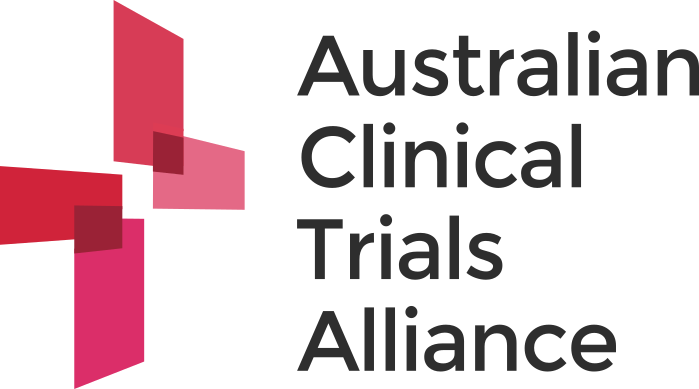ACTA’s Special Interest Group for Network Managers (SIGNet) is a vital platform for exchanging knowledge, expertise and resources among clinical trial networks (CTNs). This series of case studies highlights individual SIGNet members’ experience with the group and how it has helped their work.

Michelle Hall is the statewide coordinator for the NSW Drug and Alcohol Clinical Research and Improvement Network (DACRIN). DACRIN is a network of 16 local health district, health network, and non-government organisation alcohol and other drug (AOD) services that work together to improve AOD clinical research in NSW. Michelle has been a member of SIGNet since 2021.
We talked to Michelle about SIGNet, and how the Consumer Involvement and Engagement Toolkit, developed by ACTA and CT:IQ, played a crucial role in DACRIN’s creating their own consumer involvement guidelines.
How did you find out about SIGNet, and why did you decide to join?
I got involved as part of DACRIN’s membership with ACTA. I wasn’t sure what it was about to start with, but I have found it to be worthwhile for sharing resources and keeping up with news from the clinical trial sector. Although DACRIN is the only AOD CTN in the group, I still learn from managers working in other research areas.
Tell us about consumer involvement in DACRIN research.
We’re really trying to listen to the motto of ‘Nothing about us without us’, and embrace the experiences of people who have, or have had, a substance use disorder. It’s crucial that we include these individuals in decisions that directly shape their lives, so they aren’t just being passive recipients of choices made by others.
The good news is that AOD consumers are becoming more empowered in the realm of AOD research. They’re not just observers – they’re actively taking on advisory and partnership roles right from the start of a project, and they’re being recognised and compensated for the valuable contributions they bring to the table. It’s a positive shift, acknowledging the expertise and insights
that consumers can provide throughout the research journey.
What prompted you to produce guidelines for involving consumers?
Our researchers face an ongoing challenge in the early stages of many AOD studies. Getting the funds to compensate consumers for their input right from the start is often a real struggle. Some members’ services are fortunate to have consumers as employees, but most do not.
When researchers don’t have access to consumers, they may delay involving them until they get the funding. Although they are trying to do the right thing by waiting to get funding to pay consumers for their involvement, the snag is that it means consumers are not part of the initial stages of research design, which means their voices may not be heard as fully as they could be.
We needed to find a way for our researchers to all have the opportunity to bring consumers into the picture and compensate them right from the get-go. And it wasn’t just about the money – we wanted to make sure our researchers knew how to bring consumers in meaningfully, steering clear of token gestures. So these guidelines are our way of tackling these challenges and setting up a framework that ensures consumers are meaningfully involved in the research journey
right from the word go.
How did you find out about the ACTA/CT:IQ consumer engagement toolkit? How did you use the toolkit in developing your guidelines?
I was investigating online, to see what was out there for consumers and advisory panels, and I found the toolkit. It was an amazing resource and I kept going back to it – and soon realised that it had nearly everything we needed to develop our guideline.
What parts of the toolkit were directly relevant to your needs?
Nearly all of it. We used most sections – Understanding, Planning, Undertaking, Evaluating – but with changes to make it specific to AOD trials.
There were lots of good resources that were really practical too: for example, ‘Planning your involvement’, the consumer involvement cost calculator, and the expressions of interest and evaluation forms.
Have you noticed changes in consumer involvement since developing the guideline?
It’s still early days since we rolled out the guidelines, just a few months ago, so it’s a bit too soon to give a definitive answer on how they are shifting consumer involvement in DACRIN studies. But I can say they have definitely changed the way I involve consumers in reviewing our resources. Now, if I’ve got a document that’s about consumers, like these guidelines, I know that it needs to be reviewed by consumers, and I’ve got a much clearer roadmap on how to involve them.
It’s genuinely fulfilling to hear that the consumers that were involved in the review of the DACRIN Consumer Involvement Guidelines appreciated being asked to contribute and have felt that their input is meaningful. One standout moment was when one of our amazing consumers presented at a conference recently. He specifically mentioned how pleased he was to be invited by DACRIN to review the guidelines.
How do you see future consumer involvement in your CTN?
I see a promising trajectory for consumer involvement in DACRIN. The guidelines have already transformed how I engage consumers, especially in requesting their input into documents and guidelines that are about consumers.
As we move forward, I anticipate a more seamless integration of consumers right from the get-go, in research studies and DACRIN resources. The shift is not just about the process though; it’s about fostering a culture where consumers feel genuinely valued and empowered. Their positive response so far, expressing appreciation for being asked to contribute, suggests that we’re on the right track.
Resource Documents
How DACRIN is enhancing consumer involvement in research

